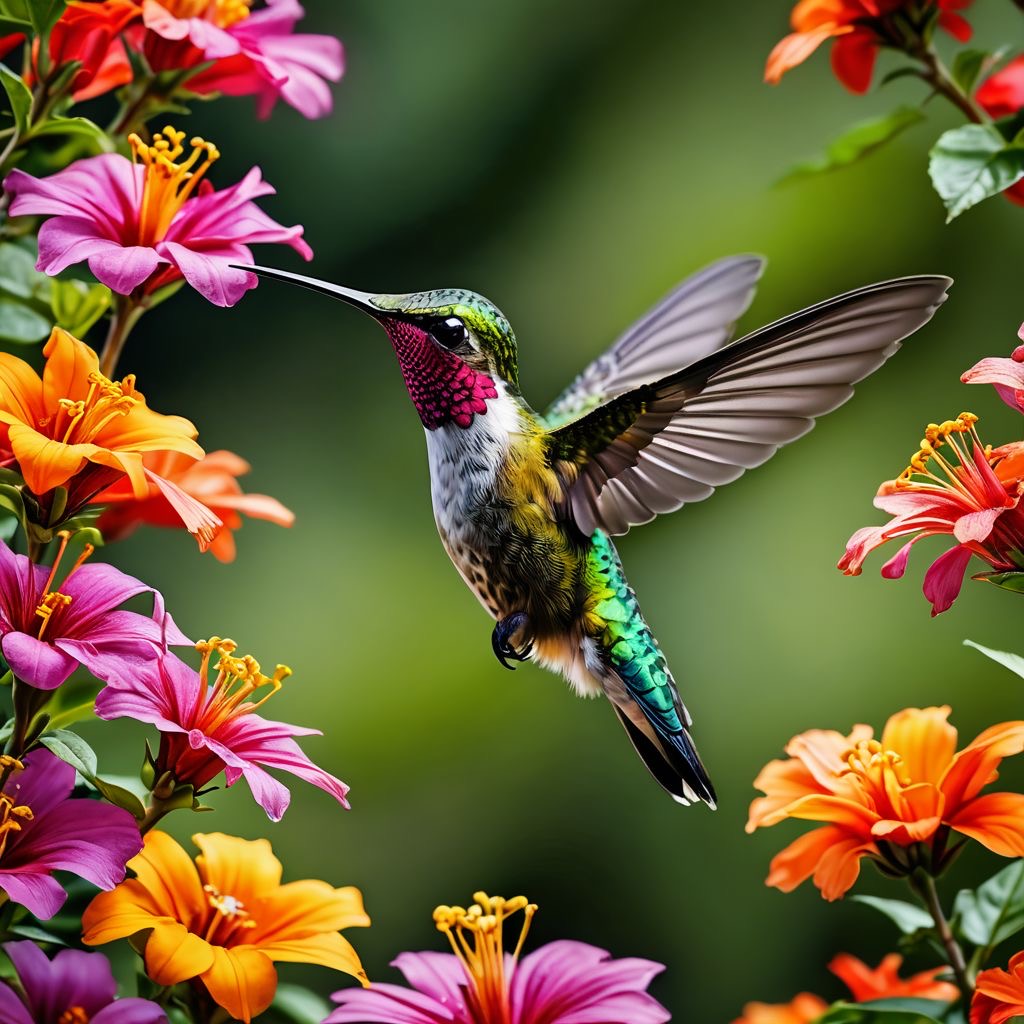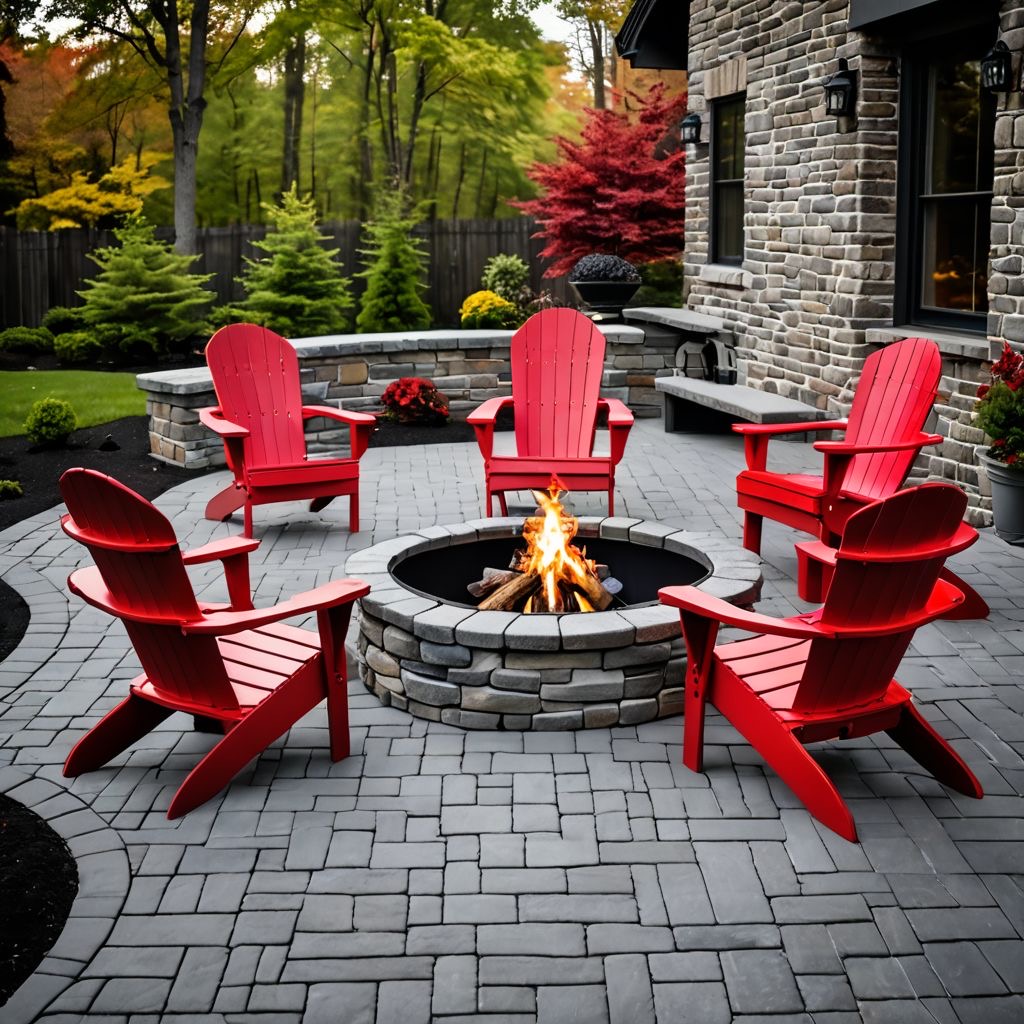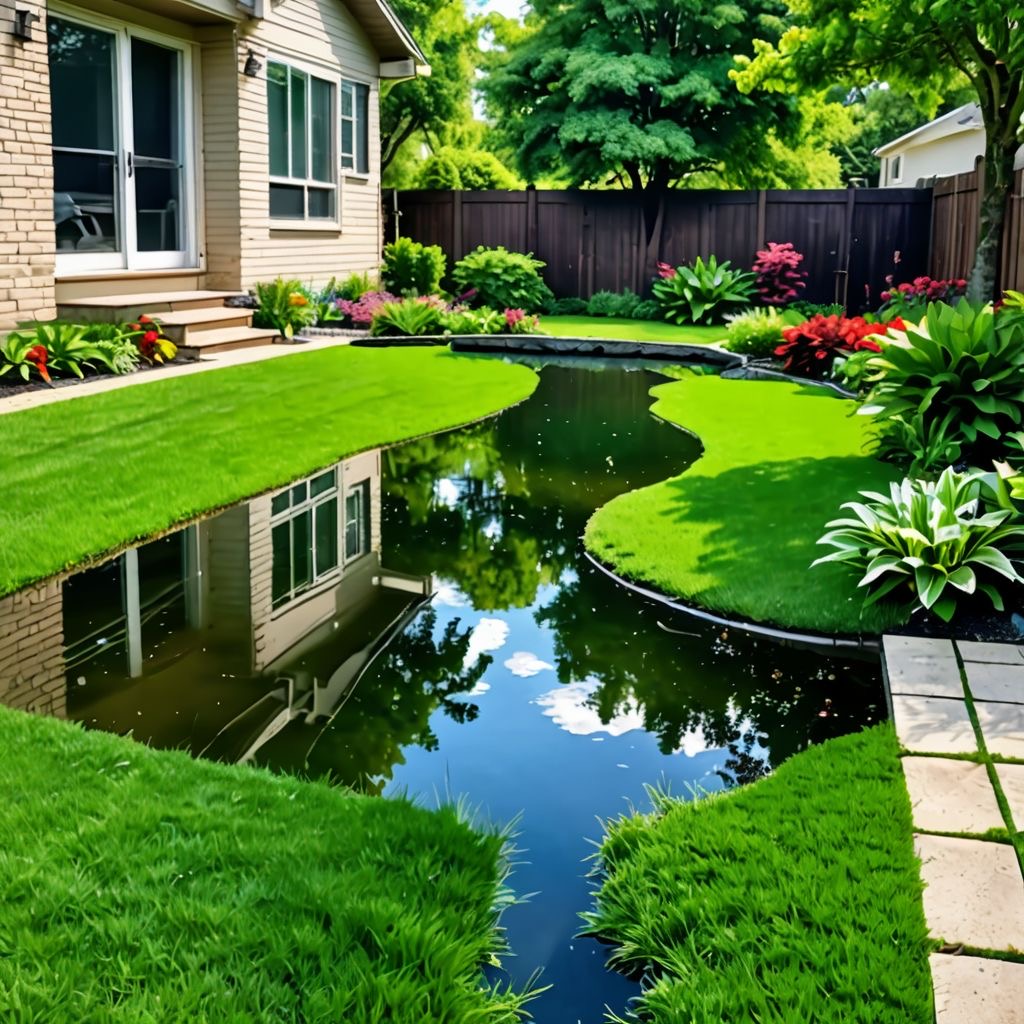
Table of Contents:
1. Introduction
2. What Are the Best Low-Maintenance Landscaping Options That Can Withstand Our Winnipeg-style Climate?
3. How Can I Create a Pollinator-Friendly Garden to Support Local Ecosystems?
4. What Are the Latest Trends in Patio and Outdoor Living Space Design for Winnipeg?
5. How Can I Improve Drainage in My Yard to Prevent Water Damage, Especially After Snowmelt and Heavy Rains?
6. What Are the Best Native Plants for Winnipeg That Are Both Beautiful and Hardy?
7. How Can I Incorporate Sustainable Practices into My Landscaping?
8. What are the best Hardscape options for our Manitoba Environment - ie. Hardscaping Winnipeg-style?
9. How Do I Choose the Right Trees for My Property in Winnipeg?
10. What Are Some Cost-Effective and Affordable Landscaping Ideas for Winnipeg Homeowners on a Budget?
11. Conclusion
1 Introduction:
As we step into 2025, landscaping trends and homeowner priorities in Winnipeg are evolving. Residents, both seasoned and new homeowners, are increasingly recognizing the significance of creating functional, sustainable, and aesthetically pleasing outdoor spaces. Homeowners are particularly focused on enhancing their properties with landscaping choices that reflect their lifestyles, environmental consciousness, and personal aesthetics. This year's discussions are colored by a heightened awareness of sustainability, climate resilience, and the need for low-maintenance landscaping solutions that accommodate busy modern lives.
In Winnipeg, known for its extreme weather conditions, landscaping presents unique challenges. Homeowners grapple with the short growing season, icy winters, and the need for hardy plants that can survive diverse climate conditions. Concurrently, the growing popularity of outdoor living spaces has led to the demand for designs that extend indoor comforts into the great outdoors. From strategies for establishing pollinator-friendly gardens to the best practices for improving drainage—questions surrounding landscaping are profoundly relevant.
As we explore the answers to the top ten landscaping questions for Winnipeg homeowners, we'll uncover insights and tips that cater not only to aesthetic desires but also to environmental responsibility. This comprehensive guide aims to provide practical solutions, innovative ideas, and encouragement to embrace the beauty and benefits of well-thought-out landscaping. Whether you are looking to create a vibrant outdoor retreat, enhance the value of your property, or contribute to local ecosystems, the answers to these questions will offer you valuable guidance on how to navigate the landscaping journey in the year ahead.
2. What Are the Best Low-Maintenance Landscaping Options That Can Withstand Winnipeg's Climate?
With the demands of modern life, many Winnipeg homeowners are prioritizing low-maintenance landscaping options that can thrive in the region's unique climate. Options include:
To read more about unique low maintenance Winnipeg landscape options CLICK HERE
- Drought-Tolerant Plants: Consider plants like sedums and native grasses. These species require less watering and provide visual appeal.

- Hardy Native Plants: Opt for native varieties like Purple Coneflower (Echinacea purpurea) and Prairie Dropseed (Sporobolus heterolepis), which are well adapted to local conditions.

- Groundcovers: Groundcovers such as creeping thyme or Siberian cypress offer excellent alternatives to traditional lawns, reducing the need for mowing and watering.
- Hardscaping Elements: Incorporate patios, walkways, and stone borders that reduce the lawn area and require minimal upkeep while adding structure to the landscape.

By selecting these low-maintenance options, homeowners can enjoy beautiful yards without the burden of extensive upkeep.
3. How Can I Create a Pollinator-Friendly Garden to Support Local Ecosystems?

Creating a pollinator-friendly garden is an excellent way for homeowners to support essential local ecosystems. Here’s how you can make your landscape a haven for bees, butterflies, and other pollinators:

- Diverse Planting: Incorporate a variety of flowering plants that bloom at different times throughout the growing season. Native plants such as milkweed, bee balm, and sunflower can attract diverse pollinators.
- Water Sources: Providing a shallow water source, like a birdbath or small pond, can greatly benefit pollinators. Ensure to replenish water regularly.

- Habitat Creation: Establish areas of natural ground cover to allow pollinators to nest. Avoid using chemical pesticides, opting instead for organic gardening practices to protect these beneficial species.
- Pollinator Gardens: Consider creating designated pollinator beds with a mix of perennials and annuals that yield nectar and pollen.

By fostering a pollinator-friendly environment, homeowners not only beautify their landscape but also contribute positively to the local ecosystem.
4. What Are the Latest Trends in Patio and Outdoor Living Space Design for Winnipeg?
As outdoor living continues to gain popularity, homeowners are keen to explore the latest trends in patio and outdoor space design. Key focal points include:
- Functional Outdoor Kitchens: Modern outdoor kitchens equipped with grills, counter space, and storage areas offer homeowners a place for gatherings, making outdoor entertaining seamless.

- Integrated Fire Pits: Fire pits can act as a central feature for socialization, doubling as a heat source during Winnipeg's cooler evenings.

- Durable Furnishings: The demand for comfort and durability has led to the rise of weatherproof furniture created from materials like metal, resin, or treated wood, designed to endure varying weather conditions.
- Seamless Transitions: Homeowners are looking for ways to connect indoor and outdoor areas with large, multi-panel sliding doors or retractable screens that enhance the flow and usability of the space.
Such designs maximize the use of outdoor areas, allowing homeowners to enjoy a beautiful backdrop while entertaining guests or simply relaxing.
5. How Can I Improve Drainage in My Yard to Prevent Water Damage, Especially After Snowmelt and Heavy Rains?
In an environment like Winnipeg where fluctuating temperatures and significant precipitation are common, proper drainage is crucial. Homeowners can implement several strategies to mitigate water-related issues:
- Regrading: Assess the slope of your yard; regrading it can help direct water away from the foundation. A slope of at least 2% away from the house is recommended.
Perfect! Proper grading, directing water away from a home's foundation.

To read more about about grading and water damage prevention through landscape design CLICK HERE
- French Drains: Installing French drains can effectively manage excess water. These systems channel water away from foundational walls, reducing the risk of flooding and dampness in basements.
- Gutter Maintenance: Ensure that gutters and downspouts are clean and properly directed. Downspouts should discharge water at least 3-5 feet away from the foundation.
- Rain Gardens: Creating a rain garden to absorb runoff can be a beautiful and functional solution. Native plants can help filter and utilize water efficiently.
Effective drainage solutions will protect landscapes and homes from water damage, enabling homeowners to maintain aesthetically pleasing and functional outdoor spaces.
6. What Are the Best Native Plants for Winnipeg That Are Both Beautiful and Hardy?
Native plants offer significant advantages, including adaptability to local conditions and low maintenance needs. Homeowners looking to enhance their garden with beautiful yet resilient plants should consider:
- Prairie Flowers: Species like Purple Coneflower, Black-eyed Susan, and Wild Bergamot can add vibrant colors and attract pollinators while thriving in native soils.
- Shrubs: Options such as Serviceberry and Ninebark provide visual interest and can adapt to various soil types and moisture conditions.
- Grasses: Ornamental grasses like Switchgrass and Little Bluestem create movement and texture in the landscape and require little care.
- Trees: Consider using Red Maple or Bur Oak, which are not only visually appealing but also support local wildlife.
By incorporating these plants into their landscaping, homeowners can enjoy a garden that reflects local biodiversity while remaining low maintenance.
7. How Can I Incorporate Sustainable Practices into My Landscaping?
Sustainability has become an essential aspect of landscaping. Homeowners keen on minimizing their ecological footprint can consider the following practices:
- Rainwater Harvesting: Installing rain barrels can collect water from roof runoff for irrigation. This practice conserves water and supports healthy plant growth.

- Organic Gardening: Implement organic fertilizers and pest control methods to promote a healthy ecosystem while reducing chemical runoff.
- Composting: Homeowners can compost garden waste and food scraps to create nutrient-rich soil amendments for their gardens.
- Xeriscaping: Design a garden that requires minimal irrigation by choosing drought-resistant plants and creating landscape designs that prioritize water conservation.
By embedding sustainable practices into their landscapes, homeowners not only enhance their outdoor spaces but also contribute to environmental conservation.
8. What Are the Best Hardscaping Options for Winnipeg's Environment?
Hardscaping elements can significantly enhance outdoor aesthetics while functioning pragmatically. Suitable options for Winnipeg’s environment include:
- Paving Stones: Durable paving stones made from concrete or natural stone provide a versatile and freeze-thaw-resistant solution for patios and walkways.
- Retaining Walls: These structures can manage erosion and create tiered landscape designs that add visual interest while addressing slope issues.
To read more about retaining walls Click Here
- Water Features: Incorporating fountains or ponds can create tranquil outdoor spaces while also managing runoff effectively.
- Fireplaces and Fire Pits: Hardscaping options like stone fire pits or outdoor fireplaces can extend outdoor use into cooler seasons with minimal upkeep.
With the right hardscaping solutions, homeowners can create functional and visually striking outdoor environments that withstand the test of time and weather.
9. How Do I Choose the Right Trees for My Property in Winnipeg?
Selecting the right trees is essential for enhancing landscapes while providing shade, privacy, and ecological benefits. Homeowners should consider the following factors:
- Climate Adaptability: Focus on native or well-adapted species such as Bur Oak, Hackberry, or River Birch, known for their resilience in Winnipeg's climate.
- Functionality: Consider the purpose of planting—whether for shade, windbreak, or aesthetics—and choose species that fit these needs effectively.
- Maintenance Needs: Evaluate the potential growth size, pruning requirements, and disease resistance of chosen trees to ensure they fit your maintenance preferences.
- Space Availability: Assess your landscape layout and select trees suited for the available space without overpowering smaller structures or gardens.
By making informed choices, homeowners can successfully adopt trees that complement their landscape and thrive in Winnipeg's conditions.
10. What Are Some Cost-Effective Landscaping Ideas for Homeowners on a Budget?
Not all landscaping requires hefty investments. Homeowners can explore numerous budget-friendly strategies for creating beautiful outdoor spaces:
- DIY Projects: Engage in do-it-yourself landscaping tasks like planting flower beds, building raised gardens, or creating small hardscaping elements, which can significantly cut costs.
- Native Plant Choices: Opt for native plants that are often more affordable and require less water and maintenance. Local nurseries may offer sales or discounts on these varieties.
- Repurposing Materials: Use salvaged or reclaimed materials for garden beds, pathways, or decorative features. Old bricks, wood, or stones can create unique and personalized landscape elements.
- Seasonal Sales: Purchase plants and materials during off-peak seasons or clearance sales, allowing significant savings while still enhancing the landscape.
Budget-conscious homeowners can find ways to revitalize their landscapes, creating beautiful and inviting outdoor spaces without financial strain.
11. Conclusion:
In the vibrant and dynamic context of Winnipeg, homeowners are increasingly navigating the complexities of modern landscaping with both creativity and practicality. The questions posed by homeowners in 2025 reflect a commitment not only to enhancing their outdoor spaces but also to embracing sustainability, ecological soundness, and low-maintenance solutions. As they adopt practices that resonate with the community’s needs—from creating pollinator gardens that support local wildlife to curating landscaping that withstands the rigors of Winnipeg’s climate—homeowners are crafting outdoor environments that blend aesthetics with functionality.
In seeking informed answers to these top landscaping questions, Winnipeg homeowners can harness the beauty of their surroundings while making environmentally responsible choices. This thoughtful approach to landscaping extends beyond mere enhancement of property value; it contributes to local biodiversity, fosters community engagement, and creates spaces for relaxation and enjoyment. The journey toward a well-landscaped yard is as enriching as it is fulfilling, allowing for connections with nature and fostering a deep sense of pride in one’s home and community.
As we look to the future, the emphasis on sustainable, resilient, and adaptable landscaping will likely continue to shape the landscapes of Winnipeg. Homeowners can find comfort in knowing that with research, creativity, and community knowledge, they can design and maintain beautiful outdoor spaces that resonate with their values and lifestyles, ultimately leading to a more connected and sustainable city.

